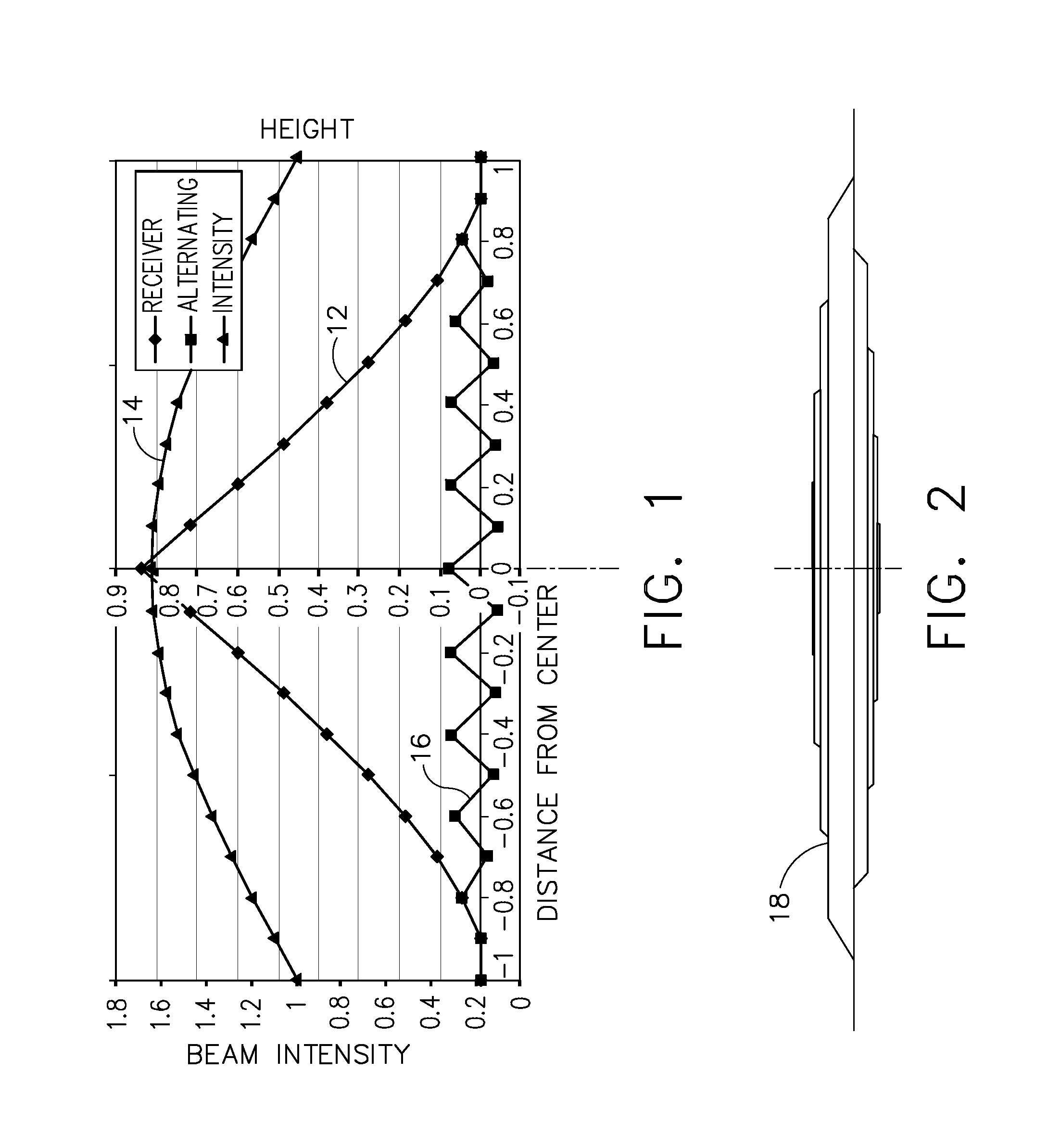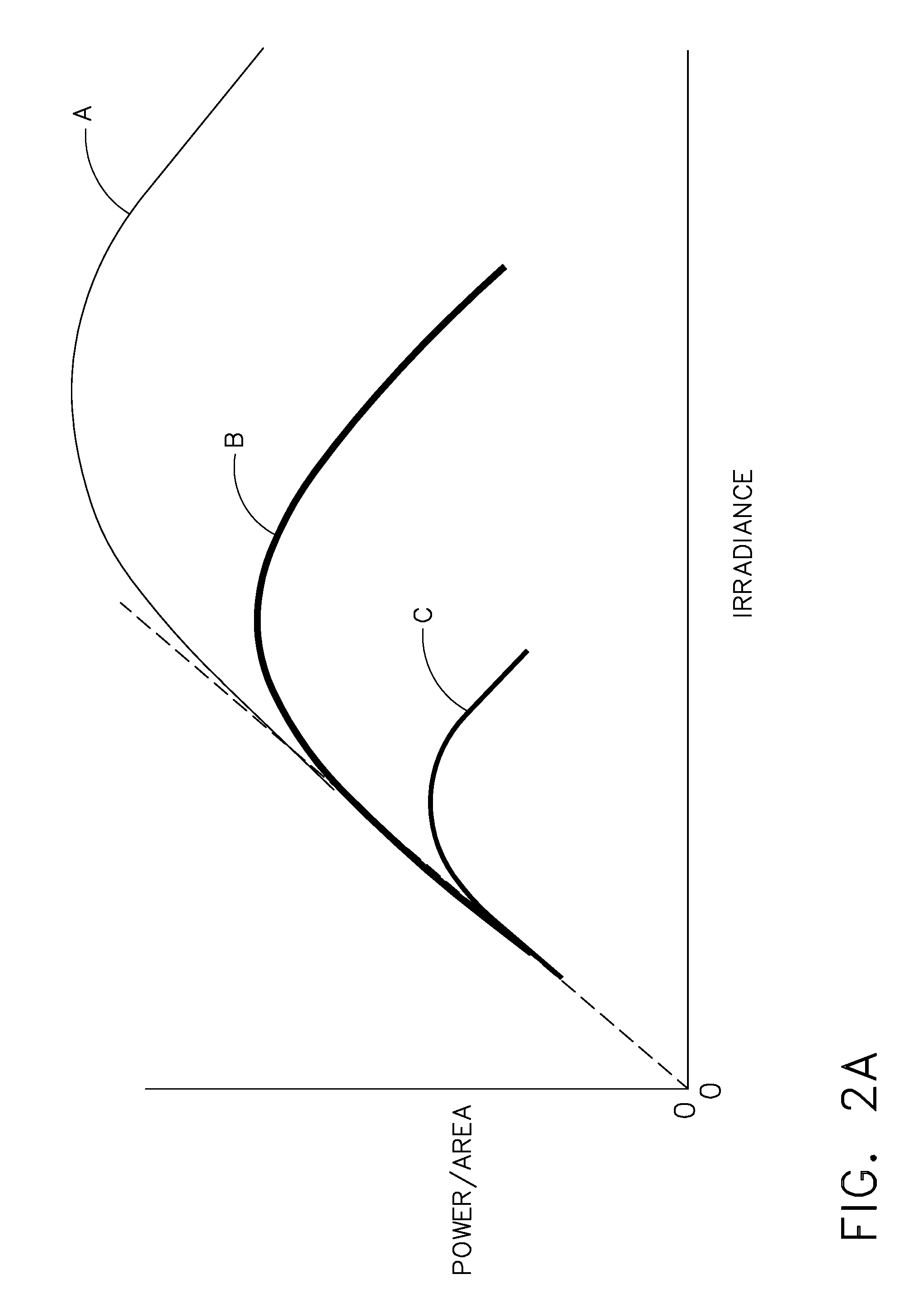Photovoltaic receiver for beamed power
a technology of photovoltaic and power system, applied in the direction of pv power plants, light radiation electric generators, generators/motors, etc., can solve the problems of limited flight range and flight duration of aircraft, limited speed and cargo capacity, and reduced resistance losses of aircraft, so as to reduce resistive losses and uniform irradiance of laser beams , the effect of increasing the average power level
- Summary
- Abstract
- Description
- Claims
- Application Information
AI Technical Summary
Benefits of technology
Problems solved by technology
Method used
Image
Examples
Embodiment Construction
[0033]The present invention is directed to a method and system for using photovoltaic (PV) arrays to provide optical beamed power to satellites, aircraft, and other similar apparatus. The optical beamed power can include, but is not limited to laser beams, infrared beams, and ultraviolet rays. When used herein, the term “laser” is understood to include any form of optical beam, and the terms are used interchangeably herein. The present invention employs laser-power beams incident on a PV array to provide steady, uniform illumination, while reducing or eliminating the diurnal, seasonal, and geographic variations that are inherent with solar power.
[0034]Referring first to FIG. 1, a graph shows alternate configurations for a PV array 12, 16 and a curve 14 showing the beam intensity that is approximately identical for both PV array configurations 12, 16. First there is shown a curved, approximately conical profile 12 of a PV array with a cusp and slopes, and a curve 14 of the beam inten...
PUM
 Login to View More
Login to View More Abstract
Description
Claims
Application Information
 Login to View More
Login to View More - R&D
- Intellectual Property
- Life Sciences
- Materials
- Tech Scout
- Unparalleled Data Quality
- Higher Quality Content
- 60% Fewer Hallucinations
Browse by: Latest US Patents, China's latest patents, Technical Efficacy Thesaurus, Application Domain, Technology Topic, Popular Technical Reports.
© 2025 PatSnap. All rights reserved.Legal|Privacy policy|Modern Slavery Act Transparency Statement|Sitemap|About US| Contact US: help@patsnap.com



